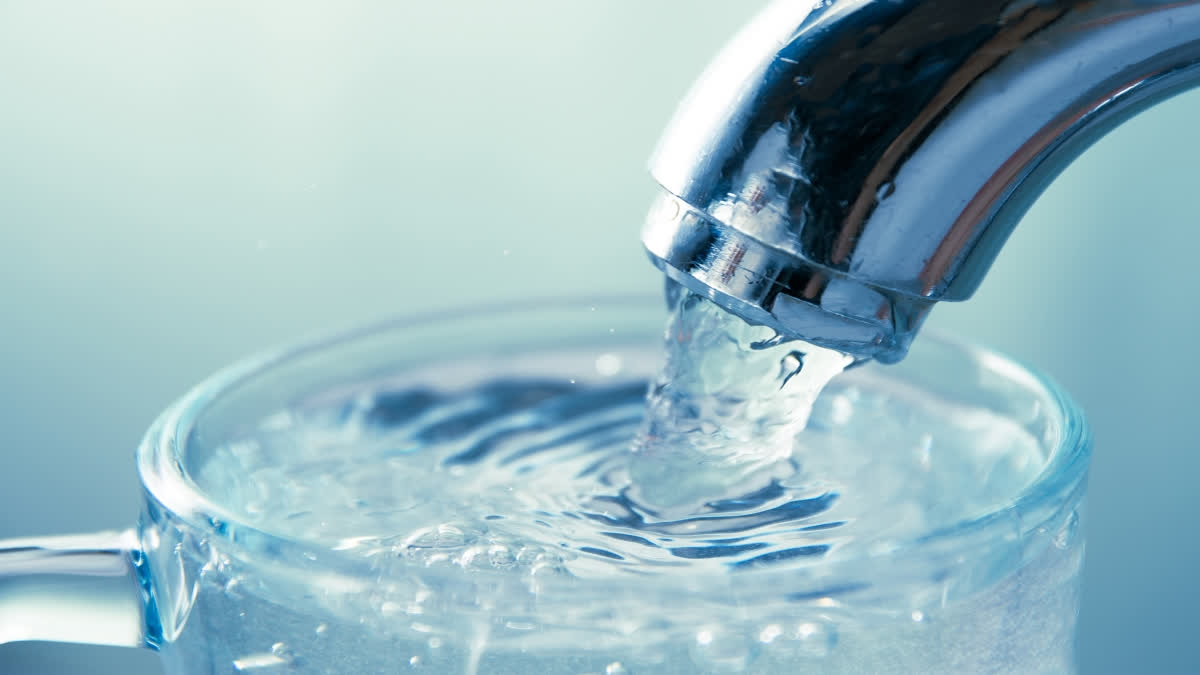New Delhi: Being aware of the fact that there will be a shortage of about 256 billion cubic meters (BCM) of fresh water in India by 2050, the Ministry of Housing and Urban Affairs (MoHUA) has issued a manual on water supply and treatment systems (Drink from Tap) to all state government to overcome the water crisis.
The Ministry has asked all state authorities, urban local bodies, parastatal agencies, and other stakeholders for effective and efficient planning, implementation and management of water supply systems with the 'Drink from Tap' facility.
India is home to 17 per cent of the world’s population but has only 4 per cent of the world’s freshwater resources. As per the report of the housing ministry, India receives about 4,080 billion cubic meters (BCM) of fresh water.
"From the surface water and replenishable groundwater, 1,999 BCM water is available annually but only 60 per cent of it can be beneficially used. Thus, India's total available water resource is 1,128 BCM out of which 690 BCM is surface water and 438 BCM is in the form of groundwater. The surface and groundwater approximately contribute 61 per cent and 39 per cent of total availability. In India, 90 per cent of flow in the rivers occurs in four months of monsoon and 50 per cent of this occurs in just 15 rainy days,” the manual issued to the concerned authorities in states said.
As per the estimate, the water resources availability will be 1191 BCM, whereas demand for water will be 1,447 BCM by the turn of the year 2050 for all users like irrigation, drinking water, industry, energy and others.
"There is a gap of about 256 BCM. Hence, it is essential to bring reforms in the water sector with a focus on conservation of water through recycling of wastewater, rainwater harvesting and control of non-revenue water (NRW) etc," it said.
As per the 2011 Census, the coverage of pipe water supply in urban areas was 71 per cent. NITI Aayog stated that 93 per cent of India's urban population had access to basic water supply.
Significantly, the Ministry of Housing and Urban Affairs (MoHUA) launched the Atal Mission for Rejuvenation and Urban Transformation (AMRUT) in 2015 with the objective of piped water supply coverage in 500 cities of India.
As of November 2023, 1.73 crore new tap connections have been provided under AMRUT. AMRUT 2.0 was launched by MoHUA in October 2021 with an objective to provide water security and 100 per cent functional tap connections in all cities and towns in the country with the target of 2.68 crore connections by 2026.
The manual issued by the ministry has also identified several challenges Indian cities are grappling with that impede the effective service delivery of clean and adequate water to their residents.
According to the manual, water security including Quantity and Quality, conversion of intermittent water supply to 24x7 pressurised water supply system (PWSS) with Operational Zones (OZs) and District Metered Areas (DMAs), strategy for improvement of drinking water quality, monitoring and control of non-revenue water and creation of database including maps are some of the major challenges India is facing at present.
The manual also quoted a NITI Aayog report which says that nearly 60 crore people living in India face high to extreme water crisis. It further mentioned that about 40 per cent of Indians will have no access to drinking water by 2030.
The report finds that the 'Water Gap' can be closed by undertaking measures such as boosting water use efficiency and lessening the water intensity of the economy through demand management and good measurement practices. NITI Aayog also estimated that about two lakh Indian persons die yearly due to inadequate and unsafe drinking water.
"In India, a huge quantity of wastewater is generated. Mismanagement of wastewater and that of liquid waste causes contamination of groundwater and poor sanitation conditions. Besides this, poor hygiene habits cause waterborne diseases among the large portion of the population, especially among the poor," it said.


